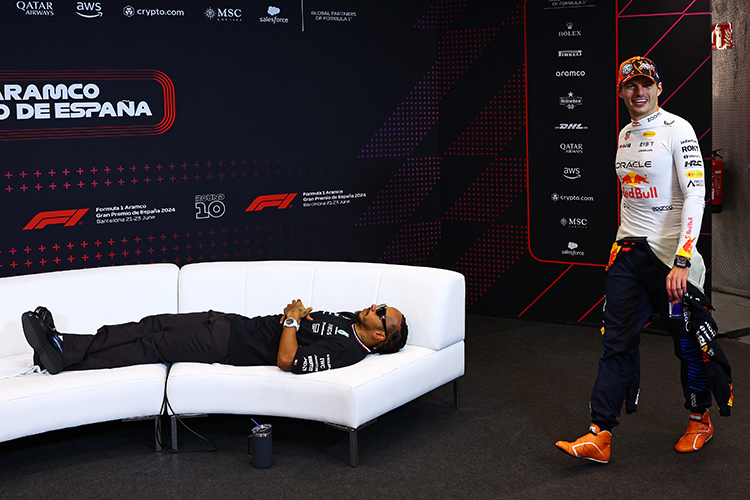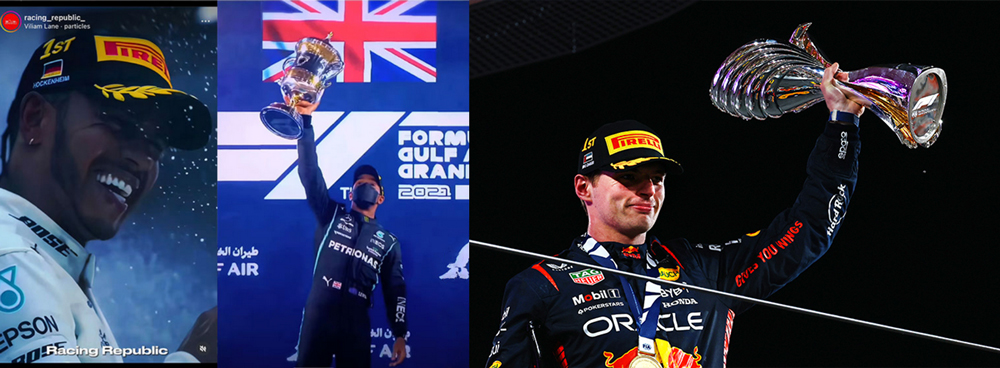Inside F1’s Money Machine: Sponsors, Payouts, and Power
Formula 1 Money Guide: Team Revenues, Sponsorships, Merchandise, Prize Money, Costs, and Ownership Explained
If speed is the show, money is the fuel. Modern Formula 1 is a billion‑dollar ecosystem where global brands, national governments, carmakers, and superstar athletes all pay (and get paid) to be part of the fastest circus on earth. This guide breaks down where the cash comes from, how it flows, who decides what, and why a tenth of a second can be worth millions.
1. The Big Picture: Who Owns What, Who Runs What
- Liberty Media’s Formula One Group (FOM): Owns the commercial rights. Sells TV deals and race hosting fees, runs trackside ads, Paddock Club hospitality, digital, and the official store. Pays teams their yearly prize money.
- FIA (the sport’s governing body): Sanctions the championship, writes and polices the technical and sporting rules, issues super licences. Independent from FOM.
- The Teams: 10 constructor entries build and race the cars. They vote with FOM and FIA on rules via the F1 Commission. Big teams carry big sway; Ferrari retains a limited veto right on certain regulatory changes.
- The Concorde Agreement: The confidential commercial compact between FOM and teams that governs prize money distribution and many operating terms. Current agreement covers the first half of the 2020s; a new one is being negotiated for 2026 and beyond.
2. How F1 Itself Makes Money
F1’s revenue is diversified and global:
- Race hosting fees: Promoters (often city, region, or national tourism authorities) pay to stage a Grand Prix. Typical range: about $30–60 million per race per year, with street races in strategic markets at the high end. Some legacy events pay less; Las Vegas is F1-promoted, so the model differs (F1 carries more risk, keeps more upside).
- Broadcasting/Media: Long-term TV and streaming deals are the financial backbone. Premium live rights drive the largest single revenue stream.
- Trackside advertising and series sponsorships: Global partners (think airlines, watchmakers, tech, energy) pay for naming rights, signage, and integrations across all races.
- Paddock Club hospitality: Ultra‑premium race-weekend experiences controlled by FOM.
- Licensing and digital: Official game, NFTs and digital collectibles, classic content, and the F1 Store (operated with Fanatics).
Scale check: Liberty Media reported F1 revenue above $3 billion in 2023, with team payments (the “prize fund”) around $1.2 billion. Team payments generally rise with calendar size, indexation, and profitability.
3. How Teams Make Money
Every team blends five main revenue streams:
- Prize money from FOM: Paid annually based on the Concorde framework (see Section 4). This is recurring, reasonably predictable revenue.
- Sponsorships and technical partnerships: Cash plus in‑kind value (software, materials, equipment). Ranges widely by team competitiveness and brand power.
- Manufacturer support: Works teams receive factory backing; customer teams may get discounted engines or in‑kind support. Some engine deals also include marketing tie‑ups.
- Merchandise and licensing: Team-branded apparel, collaborations, diecasts, lifestyle products, and hospitality sold directly by teams. The official F1 store is a separate revenue pool (for FOM), but teams’ own shops and licenses can be lucrative.
- Other programs: Driver academies, B2B technology spinoffs, engineering services, and simulator time sold to third parties.
Rule of thumb revenue mix (varies by team and season):
- Front-runners: 30–45% prize money, 40–55% sponsorship/partners, 5–15% merchandise/hospitality/other.
- Midfield: 25–40% prize money, 45–65% sponsorship/partners, 5–15% other.
- Backmarkers: 20–35% prize money, 55–70% sponsorship/partners (including personal sponsor money linked to drivers), 5–10% other.
4. The Prize Money: Columns, Bonuses, and Equalization
While exact terms are confidential and evolve, the post‑2020 Concorde Agreement made payouts fairer and more performance‑linked:
- The Prize Fund: FOM distributes a large pool (roughly in the low‑billion‑dollar range altogether) to the teams each season.
- Column 1: An equal share paid to teams that meet continuity criteria (e.g., finishing top 10 in two of the previous three seasons; provisions exist when entries change hands).
- Column 2: A performance share paid on a sliding scale according to the current season’s Constructors’ Championship finish.
- Heritage/long‑standing recognition: Ferrari retains a special historical bonus in some form; older “sweetheart” deals for other teams have been pared back.
- Newer equalization: The top-bottom spread is tighter than it used to be, making midfield finishes much more valuable and smaller teams more viable.
Note: Sprints, calendar size, and inflation adjustments can tweak totals and timing, and some payments settle the following year.
5. Sponsorships: What Logos Cost and Why Brands Pay
Teams sell a ladder of inventory:
- Title partner: Naming rights and car real estate, typically $40–70+ million per year for top teams. Strong midfield brands might fetch $20–40 million; smaller teams, less.
- Principal/premium partners: Large logos on sidepods, wings, and driver suits, $10–30 million+ depending on team and placement.
- Official partners/suppliers: From $1–10 million; can involve in‑kind tech (computing, materials, fluids, tools) plus cash.
- Regional deals: Territory‑specific rights for sponsors focused on certain markets (e.g., APAC or the Middle East).
What sponsors buy:
- Massive global reach: 24 races across five continents with sky‑high broadcast and social metrics.
- Brand positioning: Performance, innovation, sustainability narratives.
- B2B deal flow: Paddock doors open to CEOs, ministers, and investors. Many “sponsorships” pay for themselves through enterprise sales and networking.
- Content rights: Access to drivers, garages, and storytelling that brands can repurpose.
Trends:
- Tech stack deals are booming: Cloud, AI, simulation, and HPC providers integrate deeply with teams.
- Financial services, airlines, beverages, and betting remain active; crypto cooled but hasn’t vanished.
- Sustainability: SAF, circular materials, and electrification partners are increasingly visible.
6. The Cost Cap: What’s In, What’s Out, and Why It Matters
The financial regulations—F1’s cost cap—transformed the sport’s economics.
- The cap: Around $135 million per team for the core racing program in recent seasons, indexed for inflation and adjusted for race count and sprints.
- Exclusions: Driver salaries, the salaries of each team’s three highest-paid non‑driver execs, marketing, trackside hospitality, property costs, and certain legacy severance/pensions. Power units are governed by a separate cost framework and supplier price caps rather than fully within the team cap.
- R&D scope: Chassis development, aero, and performance operations are inside the cap. This pushes teams toward efficiency and project prioritization.
- Capital expenditure and testing limits: Additional rules limit wind tunnel/CFD time and capex, with some allowances to help smaller teams catch up.
Impact:
- A floor for competitiveness: Smaller teams can now break even or profit with smart operations and stable sponsorship.
- A ceiling on arms races: Wealthy teams can’t simply outspend; they must out‑optimize.
- Staffing and spinoffs: Big teams redeploy talent to non‑F1 projects (hypercar, applied tech) to retain people without breaching caps.
7. What It Costs to Go Racing (and Where It Goes)
Inside a typical team P&L:
- People: 700–1,000 staff across design, aero, race team, manufacturing, software, strategy, and operations. Personnel is the biggest cost line within the cap.
- Car development: Aero testing, composites, machining, electronics, simulation, trackside updates.
- Power units: Customer engines cost tens of millions per season under regulated supplier price caps; works teams absorb internal costs differently.
- Logistics and travel: Freight is hefty; FOM covers a base freight allowance (via its logistics partner), teams pay overages. Staff flights and hotels are on the teams.
- Tyres and fuel: Pirelli supplies tyres; fuel and lubricants usually come via sponsor/tech partner deals (cash + in‑kind).
- Insurance, compliance, licences: Not glamorous, always vital.
Add‑ons outside the cap:
- Drivers: Salaries for star drivers can exceed $30–50+ million annually, plus bonuses and image rights.
- Executive comp (top three), marketing, hospitality: Significant but strategically flexible.
8. Drivers, Bonuses, and “Pay Drivers”
- Salaries: Top champions can exceed $50 million, plus win/title bonuses. Midfield drivers often earn in the low single‑digit millions; rookies less.
- Personal sponsors: Drivers bring brands that can become team partners; these deals often bundle into the team’s commercial program.
- “Pay drivers”: Less common at the sharp end today, but still part of the ladder—especially if linked to strategic markets or manufacturer development programs.
9. Merchandise and the Fan Economy
- Team stores: Apparel, caps, diecasts, special drops, and collabs (Puma, Castore, etc.). Hot streaks on track can spike sales overnight.
- Official F1 retail: Run with Fanatics, separate from team shops. F1 also monetizes archival content and digital experiences.
- Hospitality: Teams sell their own trackside experiences and factory tours; FOM’s Paddock Club is a separate top-tier product.
10. Engine Deals and Technical Alliances
- Works vs customer: Works teams (factory power units) integrate car and engine for performance and marketing synergy. Customers buy engines and support for a regulated price.
- Technical partnerships: Cloud compute, simulation software, additive manufacturing, materials science—these tie‑ups are often as valuable as cash.
- 2026 reset: New power unit rules (more electrical energy, sustainable fuels) and aero changes will re‑price development risk. Expect reshuffling of who supplies whom, and new cost frameworks for PUs.
11. Power and Politics: Who Really Calls the Shots?
- FIA writes the rules, appoints officials, and approves entries. It can champion safety, sustainability, and cost control—sometimes against short‑term commercial interests.
- FOM drives the calendar, commercial deals, and show format (sprints, fan activations). It wants growth and spectacle.
- Teams seek competitiveness and fair economics. Votes on the F1 Commission require different majorities depending on the topic; emergency changes need supermajorities. Ferrari retains a constrained veto on certain regulatory areas.
- Promoters and governments influence scheduling and geopolitics: strategic markets can command prime slots and invest heavily in showpiece events.
12. Team Ownership and Valuations
Years of audience growth, cost controls, and Netflix‑powered fandom have sent team valuations soaring.
- Recent signals: Minority stake sales have implied valuations from the high hundreds of millions into the low billions for midfield outfits, and several billions for the elite.
- Ownership patterns:
- Automaker‑backed: Ferrari, Mercedes (split ownership among Mercedes‑Benz, INEOS, and Toto Wolff), Alpine (Renault Group), with Audi set to enter as a works team.
- Energy drink and investor‑backed: Red Bull and its sister team, plus investment groups owning Williams and others.
- Billionaire‑led turnarounds: Aston Martin and Haas models.
- Why valuations jumped: Cost cap makes cash flows steadier; prize money is more equitable; limited grid slots create scarcity; global calendar expands; top‑tier IP and fanbases have compounding value.
13. New Entries, Anti‑Dilution, and the “11th Team”
- Anti‑dilution fee: The current Concorde sets a nine‑figure fee (widely reported at $200 million) payable by any new entrant, compensating existing teams for splitting the prize fund. Teams signal they want this higher under the next agreement.
- Supply and politics: A new team must secure a competitive power unit, serious funding, and FIA approval; FOM must believe it adds net value to the championship. Recent high‑profile bids show how tough the bar is.
- Alternative path: Buying an existing entry avoids anti‑dilution and fast‑tracks to revenue.
14. Risk and Opportunity: What Can Move the Money Needle
- On‑track performance: Points and podiums raise prize money and increase sponsor rates the following season.
- Star power: A marquee driver can cover their own salary through elevated sponsorship and hospitality demand.
- Calendar and time zones: Races in prime markets can amplify brand value; more sprints add exposure and operational costs.
- Macro cycles: Ad markets, FX swings, energy prices, and geopolitics affect promoter health and sponsor appetite.
- Regulation changes (2026): Technical resets reshuffle pecking orders, investment bets, and sponsor narratives.
- Reputation and governance: Integrity issues can scare off blue‑chip money; strong ESG signals attract it.
15. Quick Example Stacks (illustrative only; team‑by‑team figures vary)
- Front‑running team annual revenue: $350–650+ million
- Prize money: $150–250m
- Sponsorship/partners: $180–350m
- Merch/hospitality/other: $20–60m
- Midfield team annual revenue: $160–300 million
- Prize money: $80–140m
- Sponsorship/partners: $70–150m
- Merch/hospitality/other: $10–20m
- Lower‑grid team annual revenue: $120–200 million
- Prize money: $60–100m
- Sponsorship/partners: $50–90m
- Merch/hospitality/other: $5–15m
16. Frequently Asked Money Questions
- Do teams make profits now? Many do. The cap plus healthier prize money and sponsor demand has turned long‑time loss leaders into investable businesses—especially if the car is competitive.
- Is driver pay capped? No. Driver and top‑three exec salaries sit outside the cost cap. A separate driver salary cap is often floated, but not implemented.
- Who pays for freight? FOM covers a base freight allowance; teams pay surcharges and staff travel.
- Who owns the team’s engines? Suppliers do; customers lease the package. Works teams co‑develop tightly with the PU department.
- Which is more valuable: a great driver or a great car? The car. But a great driver maximizes points, title odds, and sponsor pull—especially in tight fights.
17. How to Read the Money During a Season
- Livery changes mid‑season? Usually a new or upgraded sponsor deal.
- Factory expansions or wind‑tunnel upgrades? Expect a multi‑year competitive plan funded by new investment or reallocation under capex rules.
- Driver contract rumors? Often synchronized with sponsor negotiations and power‑unit choices.
- Political flare‑ups at the F1 Commission? Follow the money: cost, competitive balance, and calendar leverage are usually the root.
The Takeaway
F1 is no longer a spend‑to‑win arms race for the few; it’s a disciplined, global entertainment business where engineering meets storytelling and where the best operators—on track and on spreadsheets—win. Sponsors get a turnkey global stage, teams get predictable economics, fans get more races and better access, and the sport gets the stability to plan bold technical eras. In other words: the money machine is finally tuned to go the distance.
Notes and context
- Figures are indicative and vary by season, contract, team status, and market conditions.
- Liberty Media’s reported “team payments” were roughly $1.2 billion in 2023; overall F1 revenue exceeded $3 billion.
- Cost-cap numbers and prize distributions include adjustments for inflation, race count, and regulatory changes. Terms of the Concorde Agreement are confidential and periodically renegotiated.
Up Next



